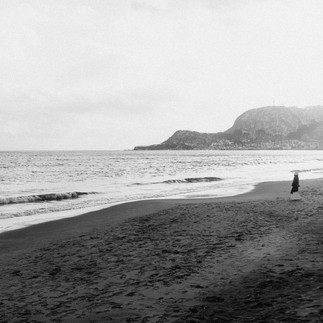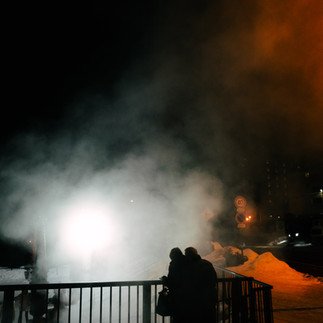2025 - Japan (Hokkaido: Hakodate and Noboribetsu Volcanic Zone)
- PT

- Apr 26
- 3 min read
Hakodate
Arriving in Hakodate, stepping off the ferry, I was greeted by that same 50-60kmh wind (gale) that battered the ferry across the strait. Not sure what the temperature was with wind-chill but guessing well below -10c.
I chose a fairly lengthy stay in Hakodate rather than going to Sapporo as I'd heard it's generally a more interesting city. Having now been to both, I very much agree. It's a seaside city of around 250,000 and had an important role in Japan's history being the first port to open up to foreign trade after the isolationist Edo period. It has a number of Russian and British colonial style buildings and churches and interestingly (for me) it also has a huge star shaped fort built in the mid 1800s that was designed by a Dutch studies scholar who modelled it off European fortresses. It's called Goryokaku and really does resemble similar Dutch fortress towns when viewed from above, which you can do from the nearby Goryokaku Tower.
The snowy weather made for very interesting walks around the fortress and it looked stunning from the tower. The views across Hakodate from Mt Hakodate Observatory (a cable car ride) are also amazing, particularly with some unsettled winter weather. There's some very interesting walks at the base of the cable car up to the observatory that take in shrines (Sumiyoshi Shrine is a must see), coastal scenery near the cape (where my umbrella might still be found) and also the Irifune fishing port which I actually visited a number of times, first time being brutally cold. There's also some quite nice beaches here such as Omori Beach which for some reason is very popular with the social media crowd and influencers, couldn't quite work out why, especially in winter.
Noboribetsu Volcanic Zone (Hell Valley)
Following the coastline (i.e. scenic) about 3hrs by standard train north of Hakodate, there is a very popular volcanic zone that while busy, is very much worth visiting. The town itself is just a few minutes walk from a valley filled with hot steam vents, sulfurous streams and multi coloured landscapes resulting from the volcanic activity. The earth certainly feels alive walking around through it, which you can also do at night, the latter being quite unique in the cold.
There's some amazing forest walks in this area along rivers and creeks that have hot flowing water. So in winter you're walking through a forest covered in deep snow, making it very silent except the birds, along a hot water river you can bathe your feet in. Very memorable walks these were although not all were accessible to due to the snow depth.
Also a must visit is the gigantic (and I mean HUGE) Grand Bath onsen complex in the Takimotokan Hotel. It's accessible to the public. This place is unbelievable, 35 baths across 5,000 square metres with so many types of baths, from super hot sodium and various other mineral healting baths to 'walking' baths (you walk across various surfaces and depths and temperatures) and standing baths (water pours on you from a height). The baths look across the volcanic valley where the hot waters come from, can't ask for more! With multiple levels it really felt almost movie like in scale. No photos of the Grand Bath for obvious reasons.
Ending this blog here, photos below.





























































